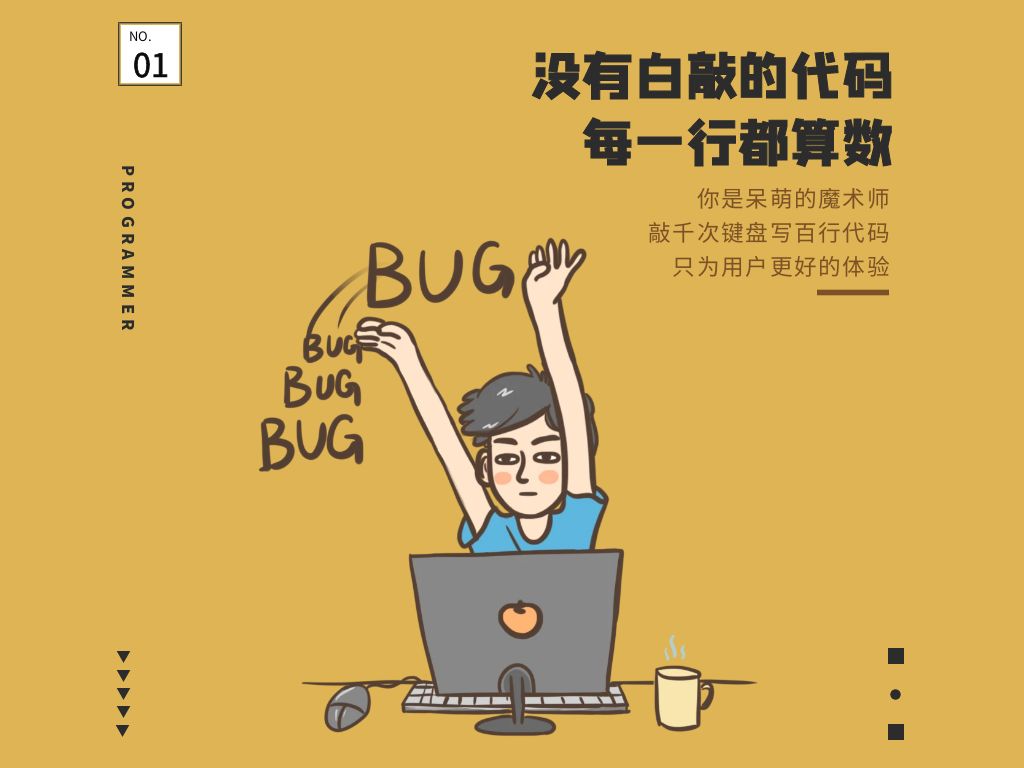本文主要是介绍使用 VisionTransformer(VIT) FineTune 训练驾驶员行为状态识别模型,希望对大家解决编程问题提供一定的参考价值,需要的开发者们随着小编来一起学习吧!
一、VisionTransformer(VIT) 介绍
大模型已经成为人工智能领域的热门话题。在这股热潮中,大模型的核心结构 Transformer 也再次脱颖而出证明了其强大的能力和广泛的应用前景。Transformer 自 2017年由Google提出以来,便在NLP领域掀起了一场革命。相较于传统的循环神经网络(RNN)和长短时记忆网络(LSTM), Transformer 凭借自注意力机制和端到端训练方式,以及处理长距离依赖问题上显著的优势,使其在多项NLP任务中都取得了卓越表现,常见模型例如:BERT、GPT 等。
随着 Transformer在NLP领域的成功,慢慢的也开始进军到了CV领域。在 CV 领域中,卷积神经网络(CNN)一直占据主导地位。然而,CNN 的卷积操作限制了其对全局信息的捕捉,导致在处理复杂场景时效果不佳。相比之下,Transformer 能够更好地捕捉长距离依赖关系,有助于识别图像中的全局特征,另外,自注意力机制也能使得模型关注到不同区域的重要信息,提高特征提取的准确性。
但是要想 Transformer 处理图像,首选需要考虑如何将图像转为序列数据,因为 CNN 的输入通常是一个四维张量,其维度通常表示为 [批次大小, 高度, 宽度, 通道数],一般图像也是RGB三维的,所以可以非常方便的处理图像数据。而 Transformer 的输入是一个三维张量,其维度表示为 [批次大小,序列长度, 嵌入维度],维度的不同导致不能直接将图像传入 Transformer 结构 。
对此 VisionTransformer (VIT)巧妙的例用了 CNN 解决了维度不一致的问题,成为了将 Transformer 架构应用于 CV 领域的一种创新方法, 下面是 VIT 的架构图:

首先,VIT将输入图像分割成一系列固定大小的图像块(利用CNN),每个块就像NLP中的单词一样,成为序列中的一个元素,这点类似于文本模型中的 Embedding 层。这种分割方法使得图像的局部特征得以保留,并为后续的处理提供了基础。接着,为了确保模型能够理解图像块的空间位置,VIT为每个图像块添加了位置编码,这些编码是可学习的参数,它们准确地指示了每个块在原始图像中的位置。
然后,每个图像块被展平成一维向量,并通过一个线性层进行嵌入,转换成高维向量。这个过程类似于在自然语言处理中将单词映射到词嵌入向量。完成嵌入后,这些向量被送入标准的Transformer编码器中。编码器由多个自注意力层和前馈网络组成,它们能够捕捉图像块之间的复杂交互和依赖关系。
最后,VIT在Transformer编码器的输出上添加了一个分类头,通常是一个全连接层,用于生成最终的分类结果。
下面是 VIT-Base 的据图结构:
VisionTransformer((conv_proj): Conv2d(3, 768, kernel_size=(16, 16), stride=(16, 16))(encoder): Encoder((dropout): Dropout(p=0.0, inplace=False)(layers): Sequential((encoder_layer_0): EncoderBlock((ln_1): LayerNorm((768,), eps=1e-06, elementwise_affine=True)(self_attention): MultiheadAttention((out_proj): NonDynamicallyQuantizableLinear(in_features=768, out_features=768, bias=True))(dropout): Dropout(p=0.0, inplace=False)(ln_2): LayerNorm((768,), eps=1e-06, elementwise_affine=True)(mlp): MLPBlock((0): Linear(in_features=768, out_features=3072, bias=True)(1): GELU(approximate='none')(2): Dropout(p=0.0, inplace=False)(3): Linear(in_features=3072, out_features=768, bias=True)(4): Dropout(p=0.0, inplace=False)))(encoder_layer_1): EncoderBlock((ln_1): LayerNorm((768,), eps=1e-06, elementwise_affine=True)(self_attention): MultiheadAttention((out_proj): NonDynamicallyQuantizableLinear(in_features=768, out_features=768, bias=True))(dropout): Dropout(p=0.0, inplace=False)(ln_2): LayerNorm((768,), eps=1e-06, elementwise_affine=True)(mlp): MLPBlock((0): Linear(in_features=768, out_features=3072, bias=True)(1): GELU(approximate='none')(2): Dropout(p=0.0, inplace=False)(3): Linear(in_features=3072, out_features=768, bias=True)(4): Dropout(p=0.0, inplace=False)))(encoder_layer_2): EncoderBlock((ln_1): LayerNorm((768,), eps=1e-06, elementwise_affine=True)(self_attention): MultiheadAttention((out_proj): NonDynamicallyQuantizableLinear(in_features=768, out_features=768, bias=True))(dropout): Dropout(p=0.0, inplace=False)(ln_2): LayerNorm((768,), eps=1e-06, elementwise_affine=True)(mlp): MLPBlock((0): Linear(in_features=768, out_features=3072, bias=True)(1): GELU(approximate='none')(2): Dropout(p=0.0, inplace=False)(3): Linear(in_features=3072, out_features=768, bias=True)(4): Dropout(p=0.0, inplace=False)))(encoder_layer_3): EncoderBlock((ln_1): LayerNorm((768,), eps=1e-06, elementwise_affine=True)(self_attention): MultiheadAttention((out_proj): NonDynamicallyQuantizableLinear(in_features=768, out_features=768, bias=True))(dropout): Dropout(p=0.0, inplace=False)(ln_2): LayerNorm((768,), eps=1e-06, elementwise_affine=True)(mlp): MLPBlock((0): Linear(in_features=768, out_features=3072, bias=True)(1): GELU(approximate='none')(2): Dropout(p=0.0, inplace=False)(3): Linear(in_features=3072, out_features=768, bias=True)(4): Dropout(p=0.0, inplace=False)))(encoder_layer_4): EncoderBlock((ln_1): LayerNorm((768,), eps=1e-06, elementwise_affine=True)(self_attention): MultiheadAttention((out_proj): NonDynamicallyQuantizableLinear(in_features=768, out_features=768, bias=True))(dropout): Dropout(p=0.0, inplace=False)(ln_2): LayerNorm((768,), eps=1e-06, elementwise_affine=True)(mlp): MLPBlock((0): Linear(in_features=768, out_features=3072, bias=True)(1): GELU(approximate='none')(2): Dropout(p=0.0, inplace=False)(3): Linear(in_features=3072, out_features=768, bias=True)(4): Dropout(p=0.0, inplace=False)))(encoder_layer_5): EncoderBlock((ln_1): LayerNorm((768,), eps=1e-06, elementwise_affine=True)(self_attention): MultiheadAttention((out_proj): NonDynamicallyQuantizableLinear(in_features=768, out_features=768, bias=True))(dropout): Dropout(p=0.0, inplace=False)(ln_2): LayerNorm((768,), eps=1e-06, elementwise_affine=True)(mlp): MLPBlock((0): Linear(in_features=768, out_features=3072, bias=True)(1): GELU(approximate='none')(2): Dropout(p=0.0, inplace=False)(3): Linear(in_features=3072, out_features=768, bias=True)(4): Dropout(p=0.0, inplace=False)))(encoder_layer_6): EncoderBlock((ln_1): LayerNorm((768,), eps=1e-06, elementwise_affine=True)(self_attention): MultiheadAttention((out_proj): NonDynamicallyQuantizableLinear(in_features=768, out_features=768, bias=True))(dropout): Dropout(p=0.0, inplace=False)(ln_2): LayerNorm((768,), eps=1e-06, elementwise_affine=True)(mlp): MLPBlock((0): Linear(in_features=768, out_features=3072, bias=True)(1): GELU(approximate='none')(2): Dropout(p=0.0, inplace=False)(3): Linear(in_features=3072, out_features=768, bias=True)(4): Dropout(p=0.0, inplace=False)))(encoder_layer_7): EncoderBlock((ln_1): LayerNorm((768,), eps=1e-06, elementwise_affine=True)(self_attention): MultiheadAttention((out_proj): NonDynamicallyQuantizableLinear(in_features=768, out_features=768, bias=True))(dropout): Dropout(p=0.0, inplace=False)(ln_2): LayerNorm((768,), eps=1e-06, elementwise_affine=True)(mlp): MLPBlock((0): Linear(in_features=768, out_features=3072, bias=True)(1): GELU(approximate='none')(2): Dropout(p=0.0, inplace=False)(3): Linear(in_features=3072, out_features=768, bias=True)(4): Dropout(p=0.0, inplace=False)))(encoder_layer_8): EncoderBlock((ln_1): LayerNorm((768,), eps=1e-06, elementwise_affine=True)(self_attention): MultiheadAttention((out_proj): NonDynamicallyQuantizableLinear(in_features=768, out_features=768, bias=True))(dropout): Dropout(p=0.0, inplace=False)(ln_2): LayerNorm((768,), eps=1e-06, elementwise_affine=True)(mlp): MLPBlock((0): Linear(in_features=768, out_features=3072, bias=True)(1): GELU(approximate='none')(2): Dropout(p=0.0, inplace=False)(3): Linear(in_features=3072, out_features=768, bias=True)(4): Dropout(p=0.0, inplace=False)))(encoder_layer_9): EncoderBlock((ln_1): LayerNorm((768,), eps=1e-06, elementwise_affine=True)(self_attention): MultiheadAttention((out_proj): NonDynamicallyQuantizableLinear(in_features=768, out_features=768, bias=True))(dropout): Dropout(p=0.0, inplace=False)(ln_2): LayerNorm((768,), eps=1e-06, elementwise_affine=True)(mlp): MLPBlock((0): Linear(in_features=768, out_features=3072, bias=True)(1): GELU(approximate='none')(2): Dropout(p=0.0, inplace=False)(3): Linear(in_features=3072, out_features=768, bias=True)(4): Dropout(p=0.0, inplace=False)))(encoder_layer_10): EncoderBlock((ln_1): LayerNorm((768,), eps=1e-06, elementwise_affine=True)(self_attention): MultiheadAttention((out_proj): NonDynamicallyQuantizableLinear(in_features=768, out_features=768, bias=True))(dropout): Dropout(p=0.0, inplace=False)(ln_2): LayerNorm((768,), eps=1e-06, elementwise_affine=True)(mlp): MLPBlock((0): Linear(in_features=768, out_features=3072, bias=True)(1): GELU(approximate='none')(2): Dropout(p=0.0, inplace=False)(3): Linear(in_features=3072, out_features=768, bias=True)(4): Dropout(p=0.0, inplace=False)))(encoder_layer_11): EncoderBlock((ln_1): LayerNorm((768,), eps=1e-06, elementwise_affine=True)(self_attention): MultiheadAttention((out_proj): NonDynamicallyQuantizableLinear(in_features=768, out_features=768, bias=True))(dropout): Dropout(p=0.0, inplace=False)(ln_2): LayerNorm((768,), eps=1e-06, elementwise_affine=True)(mlp): MLPBlock((0): Linear(in_features=768, out_features=3072, bias=True)(1): GELU(approximate='none')(2): Dropout(p=0.0, inplace=False)(3): Linear(in_features=3072, out_features=768, bias=True)(4): Dropout(p=0.0, inplace=False))))(ln): LayerNorm((768,), eps=1e-06, elementwise_affine=True))(heads): Sequential((head): Linear(in_features=768, out_features=1000, bias=True))
)
从结构中可以看出,输入三维图像, 经过(16, 16) 的卷积核,并且步长也是 (16, 16) ,如果输入大小为 (224, 224) ,则输出就为 768 个大小为 (14,14) 的特征图,然后每个特征图在展平成一维向量就是 (batch,768,196) ,接着后面就可以喂入到 Transformer 结构了。
上面对 VIT 有了简单的了解后,下卖弄使用 Pytorch vit_b_16 模型 FineTune 训练下 Kaggle 比赛中的驾驶员状态数据集。
实验使用的依赖版本如下:
torch==1.13.1+cu116
torchvision==0.14.1+cu116
tensorboard==2.17.1
tensorboard-data-server==0.7.2
二、准备数据集
驾驶员状态数据集这里使用 Kaggle 比赛的数据,由于官网已经没办法下载了,这里可以在 百度的 aistudio 公开数据集中下载:
https://aistudio.baidu.com/datasetdetail/35503
下载后可以看到训练集下有10个分类:

分别表示:
| 分类 | 解释 |
|---|---|
| c0 | 安全驾驶 |
| c1 | 右手使用手机 |
| c2 | 右手打电话 |
| c3 | 左手使用手机 |
| c4 | 左手打电话 |
| c5 | 操作中控台 |
| c6 | 喝水 |
| c7 | 向后伸手 |
| c8 | 手摸头发或化妆 |
| c9 | 与人交谈 |
每个类别下的示例图像如下:

数据集的分布如下,每个类别整体分布2000 左右:

三、VIT FineTune 训练
在 Pytorch 中已经集成好了 VIT 结构,这里使用 vit_b_16 为例,可以选择冻结所有原来模型的参数,追加两层全链接层:
net.py
from torchvision import models
import torch.nn as nnclass Model(nn.Module):def __init__(self, num_classes):super(Model, self).__init__()# 加载预训练的 vit_b_16 模型self.base_model = models.vit_b_16(pretrained=True)print(self.base_model)# 冻结主干网络的权重for param in self.base_model.parameters():param.requires_grad = Falseself.relu = nn.ReLU()self.fc1 = nn.Linear(self.base_model.heads.head.out_features, 1024)self.dropout1 = nn.Dropout(p=0.2)self.fc2 = nn.Linear(1024, 512)self.dropout2 = nn.Dropout(p=0.1)self.fc3 = nn.Linear(512, num_classes)def forward(self, x):x = self.base_model(x)x = self.fc1(x)x = self.relu(x)x = self.dropout1(x)x = self.fc2(x)x = self.relu(x)x = self.dropout2(x)x = self.fc3(x)return x
或者不冻结原有的参数,也不改变原来模型的结构,在此基础上继续训练新的类别,可以使用如下结构,直接将 head 层的输出改为分类的大小:
net.py
from torchvision import models
import torch.nn as nnclass Model(nn.Module):def __init__(self, num_classes):super(Model, self).__init__()# 加载预训练模型self.base_model = models.vit_b_16(pretrained=True)print(self.base_model)num_ftrs = self.base_model.heads.head.in_features# 修改最后一层的输出数self.base_model.heads.head = nn.Linear(num_ftrs, num_classes)print(self.base_model)def forward(self, x):return self.base_model(x)
这里我使用第一种方式,显存占用比较小,整体训练过程如下,其中使用 80% 的数据训练,20% 的数据验证:
import os.path
import torch
from torchvision import datasets, models, transforms
from torch.utils.data import DataLoader, random_split
import torch.nn as nn
import torch.optim as optim
from tqdm import tqdm
from torch.utils.tensorboard import SummaryWriter
from net import Model
import sys, json# 设置随机种子, 让结果可复现
torch.manual_seed(0)# 加载数据集
def load_data(data_dir, train_ratio, data_transforms, batch_size):# 读取数据集dataset = datasets.ImageFolder(data_dir, data_transforms)# 拆分为训练集和验证集train_size = int(train_ratio * len(dataset))val_size = len(dataset) - train_sizetrain_dataset, val_dataset = random_split(dataset, [train_size, val_size])train_loader = DataLoader(train_dataset, batch_size=batch_size, shuffle=True)val_loader = DataLoader(val_dataset, batch_size=batch_size, shuffle=False)return train_loader, val_loader, dataset.classes# 迭代训练
def train_model(model, criterion, optimizer, train_loader, val_loader, device, output_dir, writer, num_epochs=10):best_accuracy, global_step = 0.0, 0for epoch in range(num_epochs):model.train()running_loss = 0.0for inputs, labels in tqdm(train_loader, file=sys.stdout, desc="Train Epoch: " + str(epoch)):inputs, labels = inputs.to(device), labels.to(device)optimizer.zero_grad()outputs = model(inputs)loss = criterion(outputs, labels)loss.backward()optimizer.step()running_loss += loss.item()writer.add_scalar('Loss/train', loss, global_step)global_step += 1train_loss = running_loss / len(train_loader)# 验证模型model.eval()accuracy, val_loss = validate_model(model, val_loader, device, epoch, criterion)tqdm.write(f'Epoch {epoch + 1}, Device: {device}, Loss: {train_loss}, Val Loss: {val_loss} , Current Accuracy: {accuracy}')writer.add_scalar('Loss/val', val_loss, epoch)writer.add_scalar('Accuracy/val', accuracy, epoch)if accuracy > best_accuracy:# 保存最优模型结构torch.save(model.state_dict(), os.path.join(output_dir, 'best_model.pth'))best_accuracy = accuracy# 保存最终模型结构torch.save(model.state_dict(), os.path.join(output_dir, 'last_model.pth'))# 验证模型
def validate_model(model, val_loader, device, epoch, criterion):correct = 0total = 0running_loss = 0.0with torch.no_grad():for inputs, labels in tqdm(val_loader, file=sys.stdout, desc="Val Epoch: " + str(epoch)):inputs, labels = inputs.to(device), labels.to(device)outputs = model(inputs)loss = criterion(outputs, labels)running_loss += loss.item()_, predicted = torch.max(outputs, 1)total += labels.size(0)correct += (predicted == labels).sum().item()return 100 * correct / total, running_loss / len(val_loader)def main():# 数据集地址data_dir = 'imgs/train'# 模型保存目录output_dir = "model"# 日志输出目录logs_dir = "logs"# 训练集的比例train_ratio = 0.8# 批次大小batch_size = 45# 学习率lr = 1e-3# 迭代周期epochs = 50data_transforms = transforms.Compose([transforms.Resize(256),transforms.CenterCrop(224),transforms.ToTensor(),transforms.Normalize([0.485, 0.456, 0.406], [0.229, 0.224, 0.225])])# 加载数据集,80% 训练,20% 验证train_loader, val_loader, classes = load_data(data_dir=data_dir,train_ratio=train_ratio,data_transforms=data_transforms,batch_size=batch_size)if not os.path.exists(output_dir):os.mkdir(output_dir)# 记录分类顺序with open(os.path.join(output_dir, "classify.txt"), "w", encoding="utf-8") as w:w.write(json.dumps(classes, ensure_ascii=False))# 日志记录writer = SummaryWriter(logs_dir)# 设备device = torch.device("cuda:0" if torch.cuda.is_available() else "cpu")# 加载模型结构model = Model(len(classes))print(model)# 损失函数criterion = nn.CrossEntropyLoss()# 优化器optimizer = optim.AdamW(model.parameters(), lr=lr)# 训练model.to(device)train_model(model=model,criterion=criterion,optimizer=optimizer,train_loader=train_loader,val_loader=val_loader,device=device,output_dir=output_dir,writer=writer,num_epochs=epochs)writer.close()if __name__ == '__main__':main()训练期间大概占用显存两个G左右:

训练过程,可以看到验证集的准确率在逐步提升以及loss在逐步收敛:

训练结束后,可以查看下 tensorboard 中你的 loss 和 准确率的曲线:
tensorboard --logdir=logs --bind_all
在 浏览器访问 http:ip:6006/

在验证集上的准确率达到 98.5 左右,loss 的波动还是蛮大的,大家也可以加入更多优化策略进来。
四、模型测试
import os
import torch
from torchvision import transforms
from net import Model
import matplotlib.pyplot as plt
from PIL import Image
import jsonplt.rcParams['font.sans-serif'] = ['SimHei']classify_cn = {"c0": "安全驾驶","c1": "右手使用手机","c2": "右手打电话","c3": "左手使用手机","c4": "左手打电话","c5": "操作中控台","c6": "喝水","c7": "向后伸手","c8": "手摸头发或化妆","c9": "与人交谈"
}def main():image_dir = "imgs/test"# 读取分类with open("model/classify.txt", "r", encoding="utf-8") as r:classify = json.loads(r.read())# 使用设备device = torch.device("cuda:0" if torch.cuda.is_available() else "cpu")# 加载模型model = Model(len(classify))model.load_state_dict(torch.load('model/best_model.pth'))model = model.to(device)data_transforms = transforms.Compose([transforms.Resize(224),transforms.CenterCrop(224),transforms.ToTensor(),transforms.Normalize([0.485, 0.456, 0.406], [0.229, 0.224, 0.225])])imgs = os.listdir(image_dir)# 分成四个一组imgs = list(zip(*[iter(imgs)] * 4))for names in imgs:plt.figure(figsize=(8, 8))for i, name in enumerate(names):plt.subplot(2, 2, i + 1)image = Image.open(os.path.join(image_dir, name)).convert('RGB')img = data_transforms(image).unsqueeze(0)img = img.to(device)with torch.no_grad():output = model(img)_, predicted = torch.max(output.data, 1)label = classify_cn[classify[predicted[0].item()]]plt.imshow(image)plt.title(label)plt.show()if __name__ == '__main__':main()


这篇关于使用 VisionTransformer(VIT) FineTune 训练驾驶员行为状态识别模型的文章就介绍到这儿,希望我们推荐的文章对编程师们有所帮助!




